Mad honey from Turkey is a controversial honey, both medicinal and toxic. A small spoonful of mad honey produces a mild, calming, euphoric sensation, which increases overall feelings of contentedness and relaxation.
If you choose not to drink it, but to eat it in small quantities, this type of honey has medical qualities which have started to attract scientific attention. However, until its medicinal properties are well understood, it is still recommended to be avoid it.
So, what is Deli Bal, known as mad honey from Turkey?
Mad honey is produced by honey bees from the nectar of Rhododendron species, particularly Rhododendron ponticum (aka “forest rose” – as locals call it). It grows in high-altitude forested areas in the Black Sea region of Turkey.
Rhododendron species grow naturally in other countries such as Spain, Portugal, Japan, Brazil, United States, China and Nepal. But in Turkey, this honey has a historical tradition and is the largest area with rhododendron.
Mostly R. ponticum, though there are other 4 species present: R. ungerni, R. luteum, R. caucasicum and R. smirnovii.
Rhododendron ponticum
A dense, suckering shrub or small tree growing to 5 m (16 ft) tall, rarely 8 m (26 ft). The leaves are evergreen, 6 to 18 cm (2.4 to 7.1 in) long and 2 to 5 cm (0.79 to 1.97 in) wide.
The flowers are 3.5 to 5 cm (1.4 to 2.0 in) in diameter, violet-purple, often with small greenish-yellow spots or streaks. The fruit is a dry capsule 1.5 to 2.5 cm (0.59 to 0.98 in) long, containing numerous small seeds.
Rhododendron family contains more than 750 plant species.
R. ponticum has 2 subspecies: R. p. ponticum, found from Bulgaria east to Georgia and R. p. baeticum found in Spain and Portugal. Ponticum and Luteum are mostly found in the Eastern Black Sea Region of Turkey, where mad honey from Turkey (deli bal) is mainly produced.
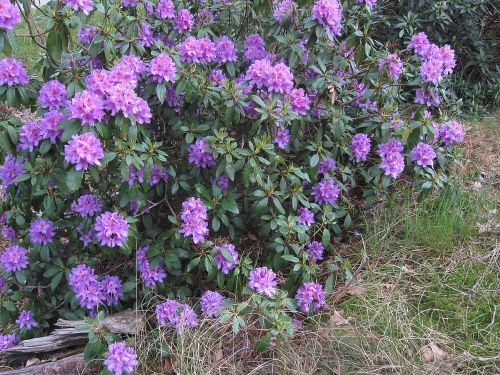
What gives mad honey its hallucinogenic effects?
Its toxic compounds.
Almost all species of rhododendrons contain: grayanatoxins and romedotoxins (grayanine type tetracyclic diterpenes – for those that understand the language).
These were first studied by G DE BODT in 1996 and are also known as andromedotoxin, acetylandromedol, rhodotoxin and asebotoxin.
Grayanotoxins are also found in the Ericacea family, Pieris, Agarista and Kalmia.
Grayantoxins act as a natural defense for the plant and protect Rhododendron plants from herbivores feeding on their leaves.
But why is this toxin present in the flower’s nectar, when normally it should be sweet and good to attract pollinators? It was shown that bumblebee pollinators can best tolerate the toxin, while other insects manifest “madness” reaction and die. The toxin levels in nectar of invasive plants are lower than that of native plants. (Philip Stevenson & Alison Scott-Brown)
Health benefits of rhododendron
Some species of this genus are used in Turkish and Chinese traditional medicine to treat lung, skin, muscle, gastrointestinal and metabolic diseases (Popescu R and Kopp B, 2013; Demir S, Turan I and Aliyazicioglu Y, 2016).
In addition, the flowers and fruits of R. tomentosum and R. molle were used as analgesic, anti-inflammatory, antimicrobial, antiviral, antifungal and insecticidal agents in ancient medicine (Jesionek A and Łuczkiewicz M, 2015; Zhou SZ et al., 2017).
With regard to the plant extracts and isolated compounds, in vivo and in vitro studies have indicated that flavonoids are mainly responsible for anti-diabetic, analgesic, and anti-inflammatory activities, while diterpenes exert toxic, insecticidal, and cytotoxic effects (Popescu R and Kopp B, 2013).
Is Rhododendron good for cancer?
Yes. Here are the cytotoxic effects of different Rhododendron species:
• Rhododendron brachycarpum leaf extracts have anticancer activity on human cancer cell lines (A549, AGS, Hep3B, MCF7) in the MTT assays (Byun KS et al., 2005)
• Demir S et al showed in 2016 study that Rhododendron luteum had antiproliferative effects on human colon and liver cancer cells.
• This study aims to determine the antiproliferative and cytotoxic effects of R. ponticum L. extracts collected from Ordu province of Turkey, on cancer cell line (F98 glioma) and to quantify the grayanotoxin I and III levels, which are most cytotoxic ones. The study’s conclusion was that Rhododendron ponticum might be predictable as a potential herbal therapeutic agent for incurable glioma amongst commonly central nervous system tumors.
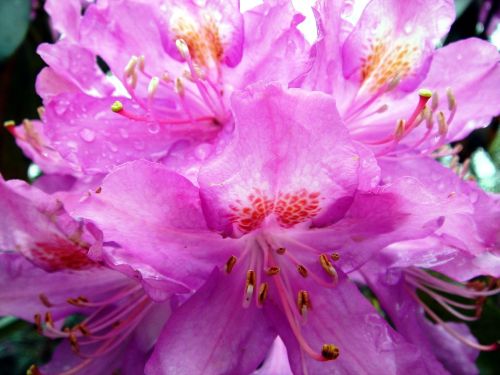
Mad Honey aka Rhododendron honey
Also known as Deli Bali, Rhododendron honey is indeed a special honey and today it is increasingly popular due to its hallucinogenic effect. It is sought by youth only for this properties, while older people are interested in its sexual stimulant properties.
In some parts of the world, a controlled dosage of honey can be taken to induce hallucinations for spiritual or psychological purposes. Such areas include northern Turkey and Nepal. (Himalayan Red Honey aka mad, toxic, hallucinogenic honey from Nepal.)
But how do you get high with mad honey without being poisoned in the process?
Well, that’s a technique only a Turkish beekeeper can handle. Or, a persistent person who keeps experimenting with different batches of honey and different doses.
Mad honey from Turkey is usually harvested from the Anzer Plateau, a pristine region also known for multifloral honey, which carries its own name: Anzer honey. Turkey also gives us the most expensive honey in the world: Elvish honey – $5200 /kg.
According to a study conducted by Sibel Silici and published in 2010, rhododendron honey samples obtained from the Black Sea Region of Turkey prove to be a good source of antioxidant and antimicrobial agents, that might serve to protect human health.
Here are some properties of mad honey that stand for its health benefits:
– Total phenolic content of honeys ranged from 0.24 to 141.83 mg GAE/100 g honey.
– Antioxidant activity of honeys was between 12.76 and 80.80 mg AAE/g honey.
– Radical scavenging activities of the honey samples were varied between 2.30% and 90.73%.
– The honey samples showed the highest antibacterial activity against Pseudomonas aeruginosa and Proteus mirabilis.
See all characteristics of rhododendron honey.
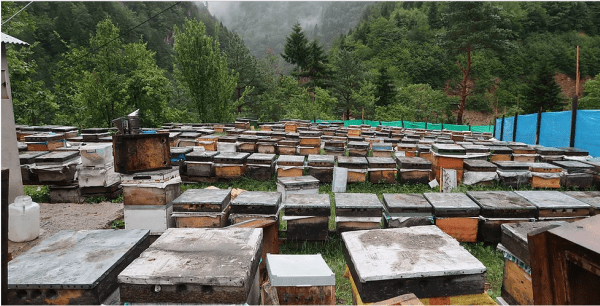 mad honey hives in northern Turkey, source miel-fou.com
mad honey hives in northern Turkey, source miel-fou.com
Health benefits of mad honey from Turkey
In traditional medicine:
• rubbed on with ‘costum’ it heals sunburn, and with salt it takes away bruises – as reported by Dioscurides (40−90 AD)
• taken in wine is a remedy for indispositions caused by eating fish = says Pliny the Elder (23−79 AD)
• there is nothing better than this honey, mixed with costus, for softening the skin of females, or,
combined with aloes, for the treatment of bruises. – PLINY. Naturalis historia, HG Bohn, 1956.
• healthy men go mad, but epileptics are cured by it immediately – says Pseudo-Aristotle, Aelian (170−235 BC) also mentioned in Geoponica, a collection of ancient writings compiled in the 10th century.
Studies
Some of the traditional medical claims have been confirmed by science: the antiepileptic property
mentioned by Pseudo-Aristotle, its antihypertensive effect and its capacity to reduce blood glucose (ÖZTAŞAN N, 2005). In general, it is considered to promote good health (GUNDUZ A, 2009) and to increase life expectancy (DILBER E, 2002)
Gastrointestinal disorders Modern studies concerning the traditional use of mad
honey mention its use as a remedy for gastrointestinal disorders such as gastritis, peptic ulcers, abdominal pain and indigestion. ( GUNDUZ A et al., 2006; SÜTLÜPINAR N et al. 1993)
Hypertension It has also been used for the treatment of hypertension ( GUNDUZ A, 2007; DEMIR H, 2011; SILICI S, 2008; MEMETOGLU ME, 2011) a practice that may be derived from the well-known fact that mad honey poisoning causes hypotension. It is believed that it reduces the risk of coronary heart disease. ( AKINCI S, 2008; DILBER E, 2002; BOSTAN M, 2010)
Ahmet Tekinsoy and his team concluded in a study published in 2017, that “the toxin in mad honey can be used to develop a drug that can be used in patients with tachycardia accompanied by hypertension after passing through all phases of drug development.”
Colds and various types of viral infections are also treated with mad honey (ALIYEV F, 2009)
Arthritis. Mad honey is used as a pain reliever and medication against arthritis. ( GUNDUZ A,, 2009; DEMIRCAN A, 2009)
Diabetes mellitus Another use of mad honey concerns its efficacy in lowering the blood glucose, being recommended as a sweetener for patients with diabetes mellitus. (KOCA I, 2007; DEMIRCAN A, 2009; ÖZTAŞAN N, 2005)
Sexual stimulant This property was intensely studied by many scientists, among whom: GUNDUZ A, 2007 and 2012; AKINCI S, 2008; BOSTAN M, 2010; YARLIOGLUES M, 2011; DEMIRCAN A,02009. According to them, mad honey can be consumed by both men and women as a sexual stimulant and to enhance sexual performance. Men have been reported to consume it for self-treatment of sexual dysfunction.
Unfortunately, the doses are not adjusted for each individual, causing more harm than good. A study conducted by Demircan A, in 2009, showed how mad honey therapeutic misadventures may be the cause of cardiac, neurologic or metabolic disorder.
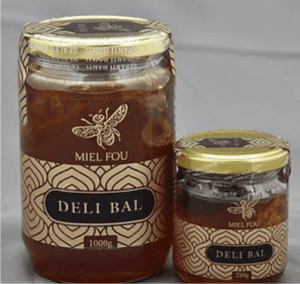 mad honey aka Deli Bal available for sale on miel-fou.com
mad honey aka Deli Bal available for sale on miel-fou.com
Cancer, coronary disease and inflammatory disorders
Mad honey has antioxidant, antiradical and antimicrobial activity that may contribute to the treatment of various different illnesses, such as cancer, coronary disease and inflammatory disorders, as well as counteract aging and other conditions. (SILICI S, SAGDIC O, EKICI L. Total phenolic content, antiradical, antioxidant and antimicrobial activities of Rhododendron honeys. Food Chem 2010, 121:238−243)
Reduces pain
• The 2013 study Analgesic effects of mad honey (grayanotoxin) in mice models of acute pain and painful diabetic neuropathy, by A Gunduz and his team from the Karadeniz Technical University, Trabzon, Turkey, investigated the effects of mad honey (grayanotoxin) on pain thresholds in normal mice as model for acute pain, and diabetic mouse as model for neuropathic pain.
The results from this experimental study indicate that GTX exhibits significant analgesic activity and has potential benefits against painful diabetic neuropathy. This is compatible with the widespread use of GTX containing mad honey for alleviating pain.
As for the dose, a quantity of between 1 teaspoonful and 2 table spoonfuls, either neat or diluted in milk, or in the form of sherbets, is usually recommended in traditional Pontus. It depends a lot on the grayanotoxin concentration in honey (H.V. Harissis, G. Mavrofridis, 2013).
Heals fractures faster
In a study conducted by Sahin A and published in 2018, compared the effect of “mad honey” and propolis on fracture healing, using radiological and histopathological analysis. The study showed that grayanotoxin-containing “mad honey” and propolis can accelerate fracture healing. Propolis was more effective than mad honey over both 15- and 30-day treatment periods.
Where can I buy mad honey from?
If you travel to northern Turkey you can find it along side roads. Unfortunately we cannot be sure if that is pure mad honey, or if it is not too toxic to be eaten.
Amazon used to sell mad honey from Turkey, but for some reason it has stopped. We may still have a chance of find rhododendron honey from Italy. It is rich, full and earthy, with a lingering finish. It is not legal in some countries.
Keep in mind that the rhododendron honey from Italy is not “mad honey”. The density of toxic rhododendron is high enough to produce mad honey only in Turkey and Nepal.
Miel Fou is the number 1 seller of Mad Honey worldwide. They offer certified genuine mad honey with lab-tested grayanotoxin levels for proper dosage, all under strict quality control standards. The honey is raw, not treated in any way that could compromise its health promoting constituents and it’s collected from small beekeepers.
Follow them on instagram @miel.fou They ship worldwide.
Miel Fou offers full, money back guarantee, except for shipping costs.
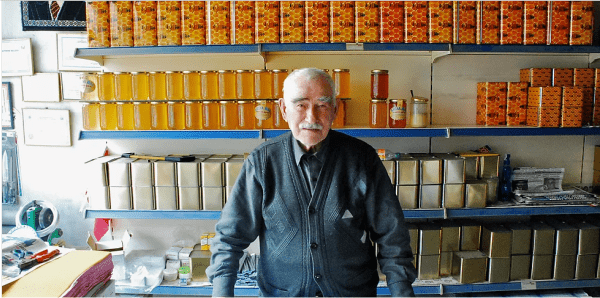 source miel-fou.com
source miel-fou.com
Can I get poisoned by mad honey?
Poisoning is dose dependent and differs from person to person. There have also been cases where only some family members displayed symptoms of poisoning, even though all family members had consumed equal quantities of mad honey.
The toxic effect of honey is also dependent on the plant species and season in which the bee is fed.
5 to 30 grams are sufficient for intoxication. (One teaspoonful has 15 g)
Symptoms may begin within a few minutes or after more than 2 hours, depending on the amount
ingested, and may persist from a few hours to a few days.
First aid in case of mad honey poisoning:
As with other cholinergic toxidromes, treatment with intravenous atropine and normal saline infusion, can be life-saving in this poisoning.
See what the symptoms of poisoning are and how to prevent them in the article: toxic honey.
![]()
Mad honey was used as a weapon. In 65 BC, King Mithridates VI (king of Pontus and Armenia Minor in northern Anatolia (now Turkey) and his army placed toxic honeycombs filled with mad honey along the roadside in waiting for the invading army of Pompey the Great. The Roman soldiers ate them, got poisoned and were then helplessly slaughtered by the Turkish army.
**********************
References:
The Black Sea’s poison; Mad Honey
http://www.mednet.gr/archives/2013-6/pdf/730.pdf
https://academic.oup.com/forestry/article/79/2/177/546958
https://www.kew.org/read-and-watch/hidden-poison-rhododendron-nectar


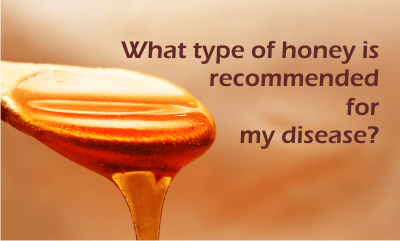
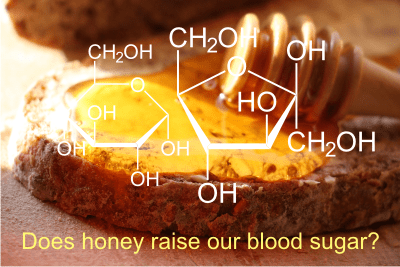
Deli Bal from Miel Fou… It’s honey but not Mad Honey. It tastes good, but for the price, its like paying $50 for a pint of Häagen-Dazs Ice Cream. Save your money, and add “Vacation in Nepal” to your bucket list.